| Roof, angled 36° (=Santa Fe), width for 5 panels
I used velcro dots to attach the panels (they have velcro on the back)
| 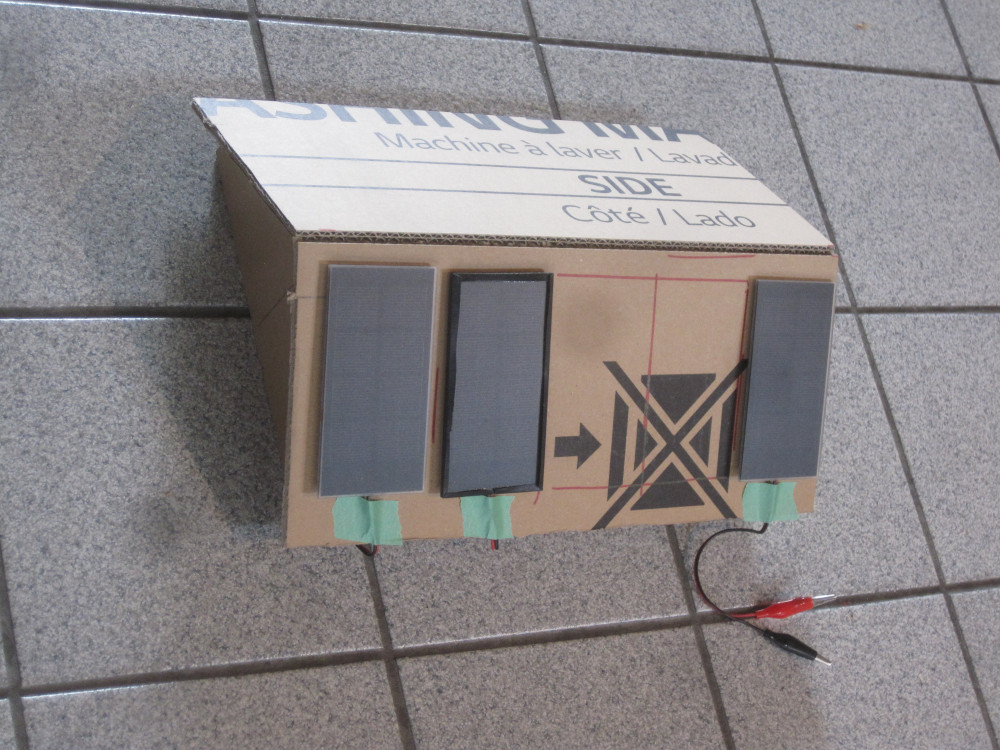
|
| Underside
| 
|
| Added a ceiling, test connections using the sound/light board.
Light conditions: Afternoon daylight, overcast sky.
| 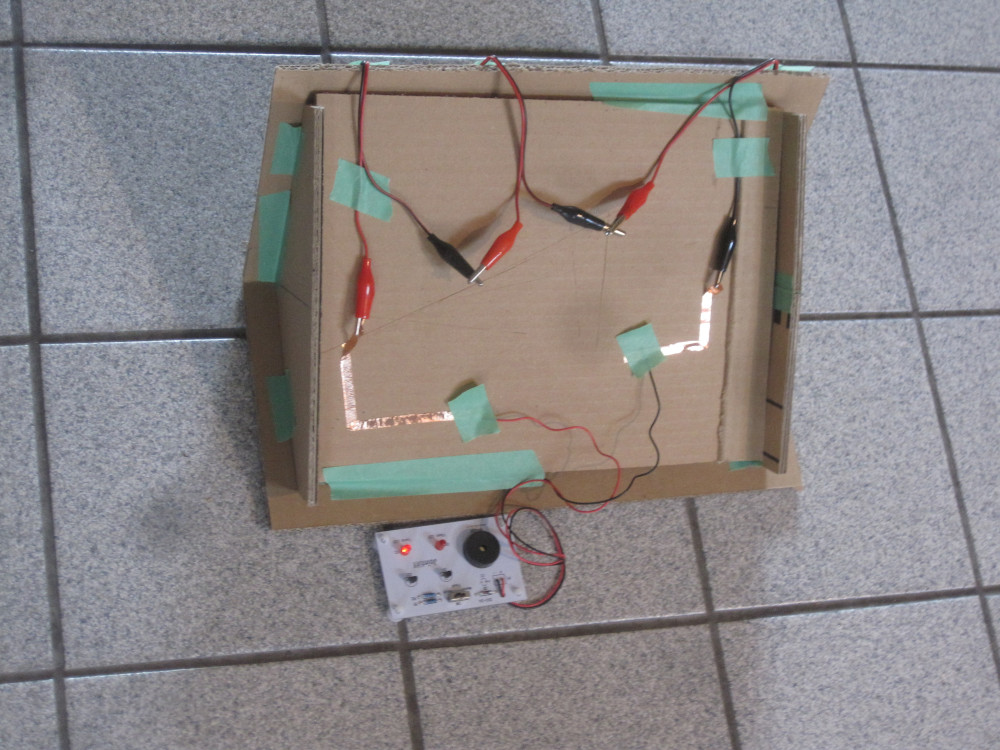
|
| LED on
| 
|
| Underside, some tape and an LED from the Arduino kit.
| 
|
| The left over cardboard is just enough to make 4 walls,
with not much cardboard remaining.
| 
|
| Walls measure 11.5×9 inches.
So if you are very frugal with how you cut your 20×30 sheet, this is
pretty much the biggest thing you can build.
| 
|
| Wiring up the house:
Here is an example cuicuit; you can see the battery, a 1K resistor, different LEDs ans a copper tape circuit.
| 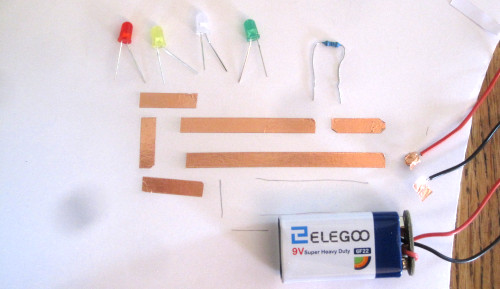
|
| If you make small holes with the tip of a (exacto) knife, you can just stick in the components
(like the resistor here). You can also tape down leads with a small piece of copper tape
(like the 9V leads here).
Note the red lead is the positive end, put it on the top strip.
At this point, measure the voltage between the 2 strips, it should read 9V. If not, most likely the resistor has a bad contact - tape the ends.
The 1K resistor is needed to limit the current, protecting the LEDs.
.
| 
|
| Poke 2 small holes in the copper strips, and insert a green LED, long lead (+) to the top.
| 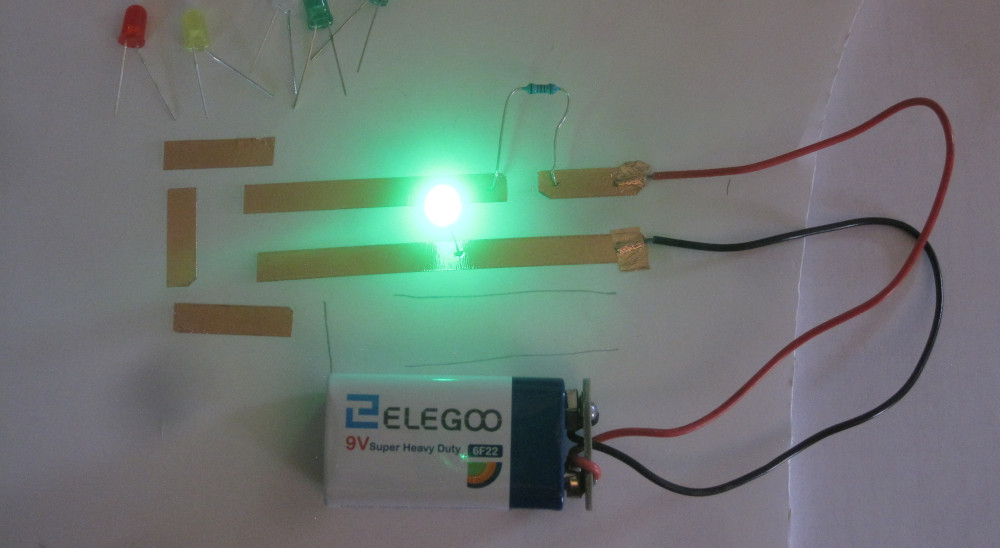
|
| More LEDs, in parallel
The 9V battery delivers enough current to light them up at full brightness.
| 
|
| Here I replaced one of the green LEDs with a red one. Now the green ones do not light up,
because (apparently) the green ones have a greater resistance, and therefore the current chooses to run through the path of least resistance, namely the red one.
So in parallel arrangements, you can only use LEDs of the same resistance (~color).
| 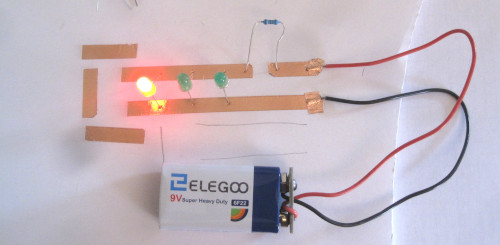
|
| Now we start going around clockwise. Note I use a paperclip to short the bottom of the red
one to the necative trace.
The current has to go through the resistor, then the green LED, then the red LED,
then the paperclip and back.
This is a series circuit, with components strung like beads on a string.
| 
|
| Here green, red, yellow and white all light up.
| 
|
| I cut a piece of tape out of the bottom trace, and used a piece of a paperclip as a switch.
| 
|
| Experiment with different LED combinations in parallel.
| 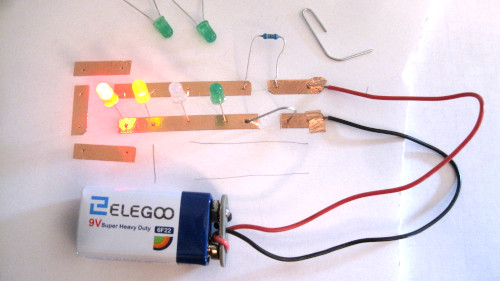
|
| The LEDs, resistor and battery come from the Arduino box.
| 
|